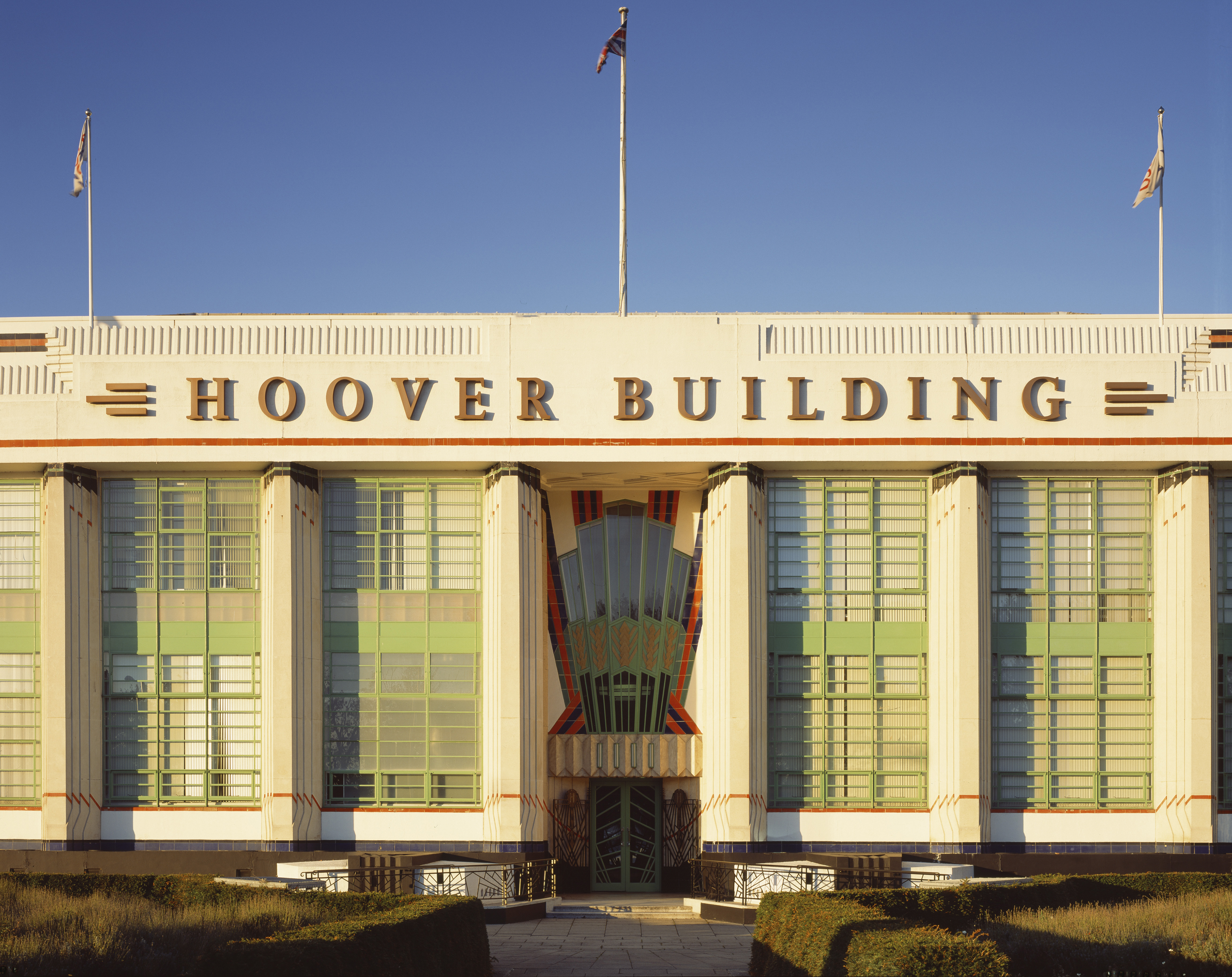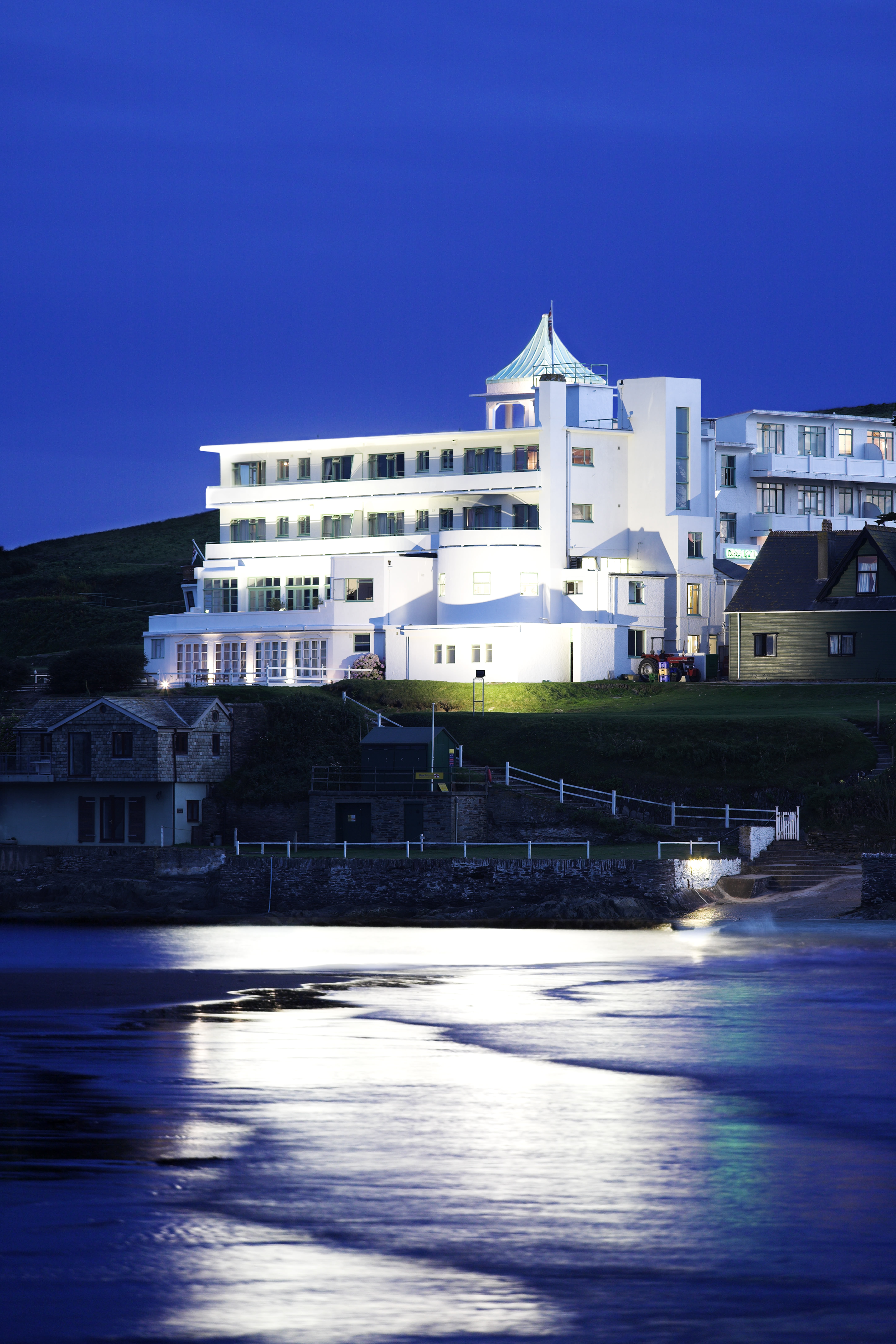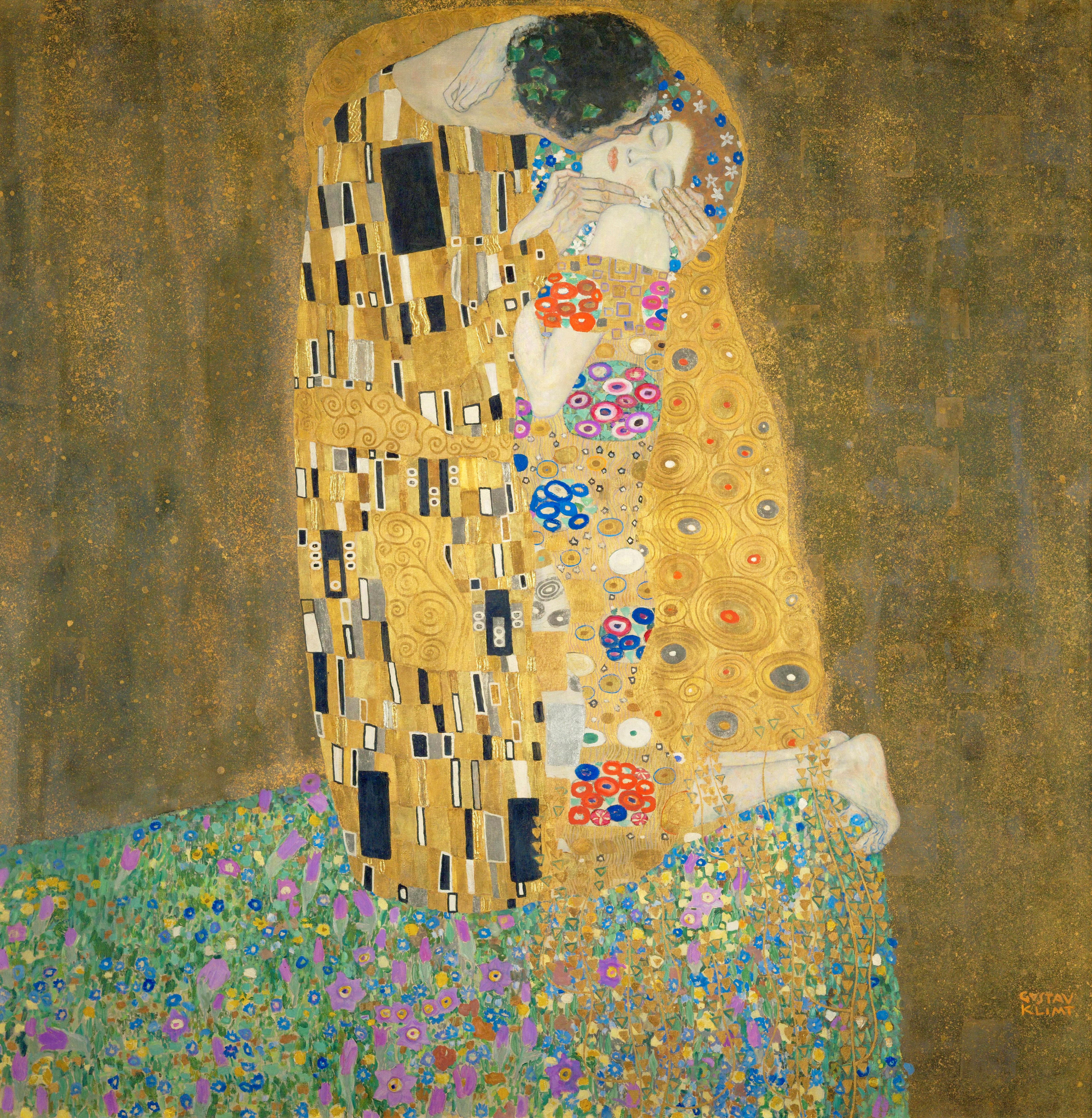Art Deco: The striking design style that embraced it all
Art Deco, with its exuberant passion for geometry, luxury and shiny chrome, cocooned troubled times in a layer of glitz. A century after the style gained its name, Gavin Plumley surveys one of the 20th century’s most all-encompassing movements.


However much I love history, I rarely want to live in the past. An exception is the period in which Art Deco gladdened everything in its path. It probably stems from childhood, when I’d often pass the Hoover Building in Perivale, Greater London. Its surging Aztec featherwork and dazzling white façade were fanciful enough, but were made even more outlandish by the contrast with their dreary suburban surroundings. Even now, having been converted into a supermarket and apartments, this former palace of industry conjures thoughts of Josephine Baker in a banana dress, cocktails on Burgh Island or RMS Queen Mary steaming over the horizon. When life proves devoid of brilliance, along comes Art Deco.

Burgh Island Hotel, which sits on its own tidal island, was once frequented by Agatha Christie, among others.
Originally called Moderne, the style was later renamed Art Deco after the Exposition internationale des arts décoratifs et industriels modernes held in Paris in 1925. Spanning the River Seine and the Grand Palais, with dozens of pavilions, the event featured 15,000 exponents of the movement. There were pleasure gardens, opera and ballet performances and endless opportunities to buy designs. It was, in many ways, the epitome of the interwar years: a celebration of freedom following the mayhem of 1914–18, with everyone blissfully unaware of what was just around the corner. In truth, however, Art Deco was much more than a snapshot in time.
The style is now indelibly associated with the 1920s and 1930s and their cast of Charleston-tripping Bright Young Things. Yet, the roots of Art Deco reach to the years before the First World War, with hints of that heritage revealed in its fervour for luxury and progress. Although the clean lines and leather, the glass and the chrome shout modernity, a parallel emphasis on artistry takes us back to the Arts-and-Crafts Movement, when the work of human hands and the power of Nature were paramount.

Gustav Klimt's 'The Kiss' scandalised Victorian society, but is arguably the artist's most famous and popular artworks.
Through successive schools, including Art Nouveau, as it was known in the French-speaking world, or Jugendstil in Central Europe, a focus on the organic gave rise to sweeping curvilinear forms. At times, the local expressions of that style conjured feral energies, heard in the dissonances and stamping choreography of the Ballets Russes. At others, its art proved ravishingly refined, as in Gustav Klimt’s kissing couples and the flowing gowns of his muse Emilie Flöge. As the pair’s careers progressed in tandem with designers such as Josef Hoffmann and Koloman Moser, all influenced by Margaret Macdonald and Charles Rennie Mackintosh, the organic gradually acceded to the abstract. Floral forms turned geometric and the surfaces of Klimt’s art came to resemble mosaics.
Art Deco’s embrace of geometry was not limited to either Paris or Vienna. A group of Czech-speaking artists and architects had become particularly enthused by Cubism, applying the principles of Georges Braque and Pablo Picasso to a dazzling array of objets d’art. Paintings and buildings, streetlamps and jewellery boxes turned cuboid overnight, including one of my own most cherished possessions: an (otherwise redundant) ashtray that looks like a half-finished, monochrome Rubik’s cube.
For all these European examples, however, it was in the US that Art Deco really ran riot. President Herbert Hoover may have declined the invitation to the 1925 exhibition in Paris on behalf of his population, imagining, some-what absurdly, that Americans couldn’t muster suitable examples for the show, yet the style was already embedded into the nation’s psyche. Even the grid plans of its cities — a throwback to the ancient world — and the patterns of its multi-ethnic cultures, African and Mesoamerican, Pueblo and Territorial, seemed to have paved the way for a host of markedly modern makers, adopted by companies such as General Electric, Chrysler and the Radio Corporation of America.

A man lights a fellow worker's cigarette as they take a break on a Chrysler building's eagle head, metal gargoyle.
As in Europe, the Americans’ brand of Art Deco was applied with equal enthusiasm to silverware and skyscrapers, creating city-scaled ‘total works of art’. For all its lusting after tactile luxury, the style did not entirely depend on the finest or most expensive materials. Cheaply coloured glass and readily available steel, even typography or a mass-produced poster, could offer a dose of luxury to the lowliest passer-by.
Exquisite houses, the beauty of Nature, and how to get the most from your life, straight to your inbox.
There was nonetheless something uneasy about such virtuoso displays in an increasingly unstable world. Although Art Deco provided glitter, it arguably suggested only surface glamour during one of the most violent and divided periods in modern history, as described in Amériques, Edgard Varèse’s nightmarish orchestral work of 1926, complete with police sirens. After all, what did an elaborate tea ceremony on Clarice Cliff China matter when the world was about to witness the Wall Street Crash and worse?
When the 1920s finally nosedived into the 1930s, Art Deco had become so pervasive that the Soviets were also able to form a new kind of social constructivism from the style. Even Adolf Hitler’s chief architect, Albert Speer, revealed a love of chrome and bronze, leather and wood, when he bent a resolutely international movement to narrow Nazi aims and the creation of a New Reich Chancellery in the heart of Berlin.
Facing such horrors, there were thankfully those who still believed in the cohesive power of art, none more so than the students and teachers of the Bauhaus. Founded in Weimar in 1919, the school continued to train aspiring artists and designers until it was closed by the Nazis in 1933. At its foundation, Walter Gropius had imagined a new classless guild of craftsmen. His was a rallying call, echoing those of John Ruskin and William Morris before him. ‘Together let us desire, conceive and create the new structure of the future,’ he declaimed, ‘which will one day rise towards heaven from the hands of a million workers, like the crystal symbol of a new faith.’
Although the avowedly left-wing Bauhaus rejected luxurious theatricality, it nonetheless embraced Art Deco’s love of geometry. Likewise, a focus on metalwork, even employing tubular steel from abandoned bicycles, prompted some of the movement’s finest objects, not least Marcel Breuer’s famous Wassily chair, as Marianne Brandt defied outmoded concepts of ‘women’s crafts’ by working in both silver and steel, photography and sculpture. There were the school’s outrageous parties, too.
Increasingly, however, the Bauhaus’s passion for practicality pointed to something much colder and harder, as would emerge later in the 20th century when its staff and students were forced to find new homes abroad. Witnessing Ludwig Mies van der Rohe and Walter Gropius’s 1950s additions to the Manhattan skyline, the satirist Tom Wolfe was particularly acerbic in describing ‘that glass of ice water in the face, that bracing slap across the mouth, that reprimand for the fat on one’s bourgeois soul, known as modern architecture’. Seemingly emulating the very regimes they had loathed, the Bauhaus had finally managed to take the fun out of functionalism, the flair out of Art Deco.
The German school wasn’t alone. In 1925 — the very year that crowds gathered in Paris to gasp at René Lalique and Marc Ducluzand’s 50ft illuminated glass fountain at the heart of the Exposition internationale — Swiss architect Le Corbusier, who had trained with Gropius, suggested an even more sweeping scheme. Encouraged by a French car and aeroplane manufacturer, he developed the Plan Voisin, in which the city’s Right Bank would have been torn down and replaced by 18 high-rise blocks. When Le Corbusier was unable to raise significant interest among the general public, he simply turned to a French Fascist organisation, which gladly reissued his (mercifully unrealised) proposals.

In short, Art Deco was not immune to the tide of history. Yet, it would be wrong to place these inconsistencies above its spirit of celebration. Championing diversity, long before such things were deemed essential, the style could also be unashamedly frivolous. Yet, it could speak of the spiritual, too, as when an enormous statue of Christ the Redeemer appeared on top of Corcovado Mountain outside Rio de Janeiro in Brazil in 1931.
From the smallest tie pin to the vast halls of Berlin’s Tempelhof, from Manhattan to Margate Sands, Art Deco embraced it all. At a time of rising totalitarianism, the movement somehow cleaved to what Noël Coward called the era’s ‘cocktails and laughter’. Art Deco may not have been unified — its vision was far too broad for that — yet it certainly showed unique ways of applying art to life. Today, with darkness again on the horizon, a little revelling in its exuberance and a little application of its aims might offer us a similar fillip for the spirit. Cue the Charleston.
This feature originally appeared in the August 13, 2025, issue of Country Life. Click here for more information on how to subscribe
Gavin Plumley is a cultural historian. He is the author of A Home for All Seasons and is currently writing his second book. Gavin appears on BBC Radio 3 and 4 and recently made his cinematic debut in Klimt and The Kiss
